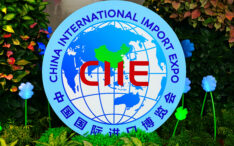
New Global Leadership Announced for Sandpiper Government & Public Affairs

Beyond Traditional Platforms: How Asian Businesses Are Breaking Through Digital Marketing Fatigue
All Eyes on AI, But Don’t Overlook Cross-Border Payments: Looking Ahead to Money 20/20 in Bangkok
April 2025

Next week, the who’s who of the Fintech world will gather in Bangkok for the Money 20/20 Conference to unpack some of the drastic changes happening across the sector in a world that’s moving faster than ever. The past 12 months have seen an unprecedented acceleration in game-changing technology for financial services, including everything from the widespread adoption of artificial intelligence (AI) to groundbreaking advances in global payment systems.
Many of the 4,000-plus in attendance will be there to dissect and discuss the transformative power of AI, affecting everything from banking to insurance, branding and customer service. In the background of this buzz, however, an equally important, albeit quieter revolution, is taking place throughout the region and having an impact across the financial services industry.
Technology Makes Advances Across Borders
Amid a turbulent geopolitical backdrop of protectionism and tariff wars among the world’s economic superpowers, huge strides are being made across Southeast Asia to ease trade through speedy and secure cross-border payment systems. Financial services groups — and national governments — are innovating to reshape payments and make them more efficient for people sending assets across borders.
In the ASEAN region, a transformative shift in cross-border payments is underway, underpinned by technological advances, a dynamic regulatory environment, and supportive policymakers. In 2021, digital payments surpassed cash for the first time in Southeast Asia[1], and the growth of digital payments in ASEAN continues to soar, accounting for over 50 per cent of transactions and projected to reach over US $416 billion by 2028.[2] The region’s economic leaders have recognised this trend and reacted quickly.
Regional Initiatives Bear Fruit
Smartphone penetration, growing e-commerce channels, the adoption of e-wallets, mobile banking and QR payments have driven demand in countries like Vietnam, Indonesia, and the Philippines, empowering small businesses and supporting financial inclusion. As more people use these tools, governments across the region have seized the economic opportunity.
Initiatives such as ASEAN’s Regional Payment Connectivity (RPC) scheme, launched in 2022, have promoted faster, cheaper cross-border payments through QR codes and high-speed payment systems. This week, Cambodia became the ninth member of the RPC initiative, joining the system established by the central banks of Indonesia, Malaysia, the Philippines, Singapore and Thailand three years ago. Vietnam, Brunei Darussalam and Lao PDR have also joined as the region edges towards an interconnected system.
Why Cross-Border Payments Matter
Why does this matter? Breaking down monetary borders and facilitating international payments will benefit trade across the region. In the case of the RPC, Cambodian travellers to Malaysia can now seamlessly use their country’s national payments app Bakong to scan DuitNow QR Codes in Malaysia and pay for their goods. The integration of those two payment systems will benefit 7 million local merchants. Amid this liberalisation, trade will thrive — and the regional economy with it.
Further efforts, such as the local currency transition framework introduced by ASEAN to promote local currencies over the US dollar in cross-border payments and trade settlements, have also improved monetary sovereignty and regional integration, reducing reliance on the US currency. In times like these, such decisions look increasingly wise, setting Asia on the path towards regional payment connectivity.
Looking Ahead to Money 20/20
With forward-thinking payment policies and growing cohesion across Southeast Asia, the region is on the cusp of an exciting new growth trajectory fuelled by cross-border payments. So much progress has been made, and it will be interesting to hear at Money 20/20 where further innovation will come from, where connectivity will improve next, and more about the leaders driving this dynamic financial revolution.
As the world’s major economies raise trade barriers, it is heartening to see Southeast Asia open its doors.
[2] Economic Research Institute for ASEAN and East Asia — Integrating Digital Payments in ASEAN: Harmonising Regulations and Strengthening Security for Inclusive Growth, Jan 2025





